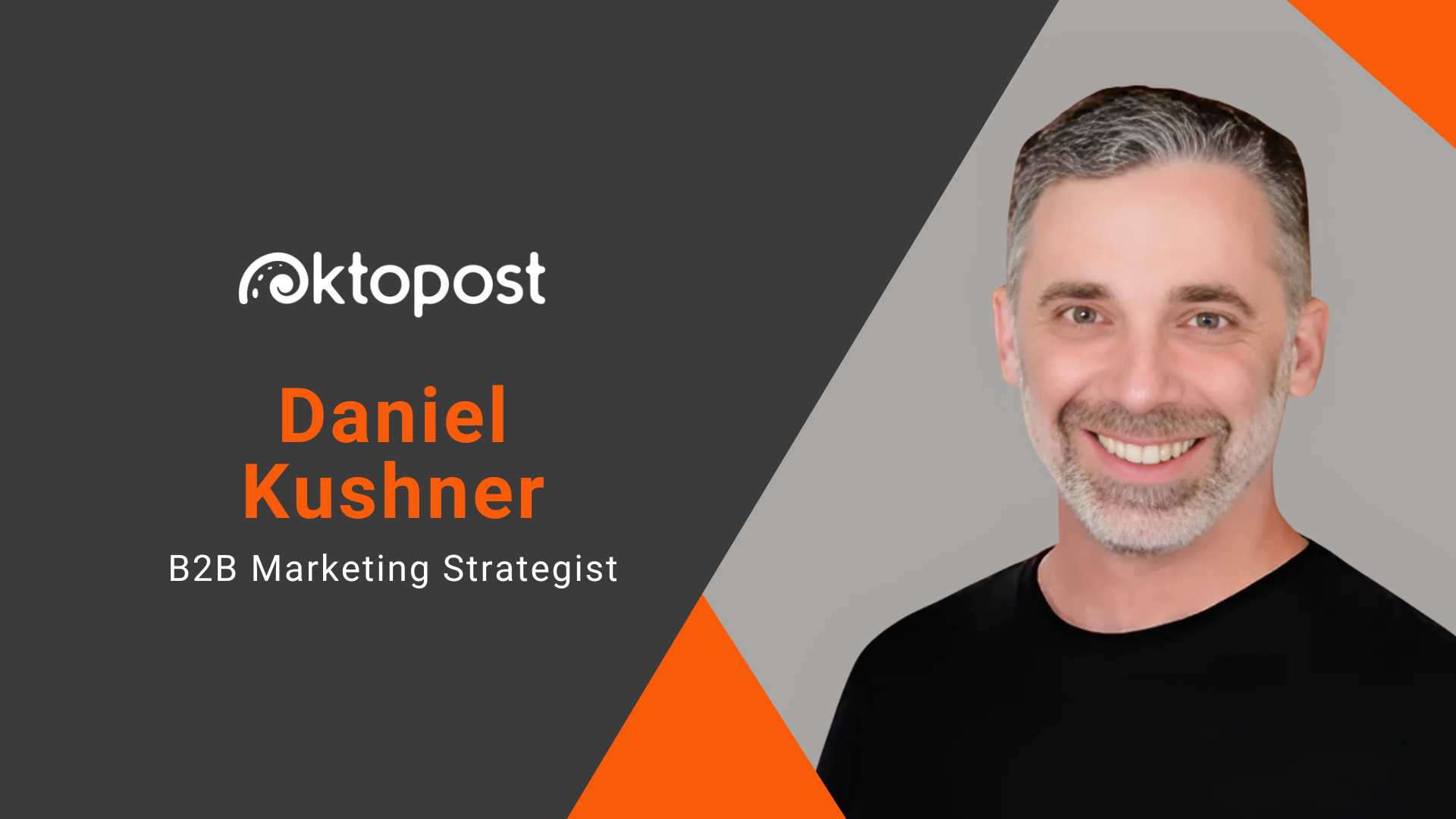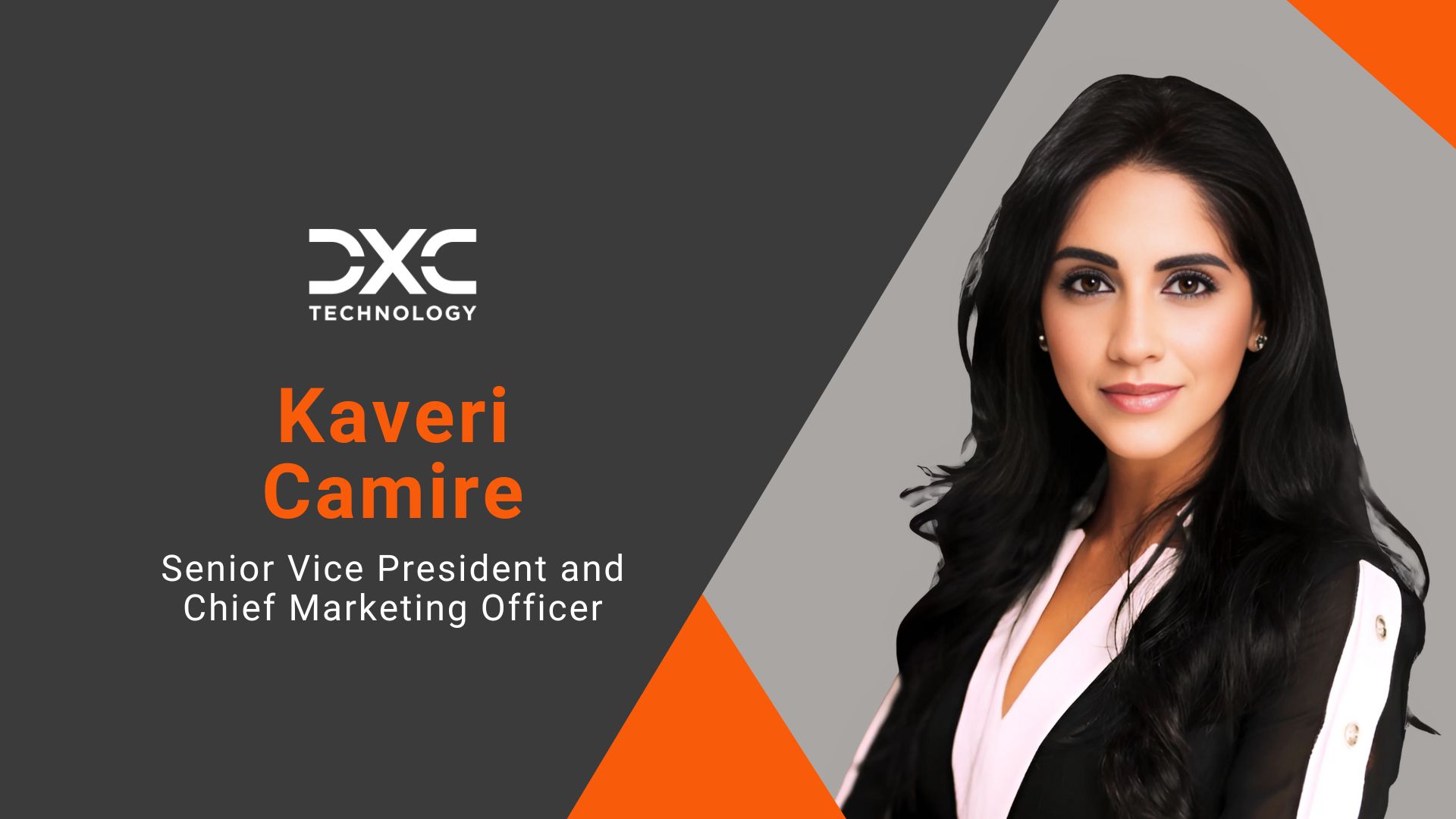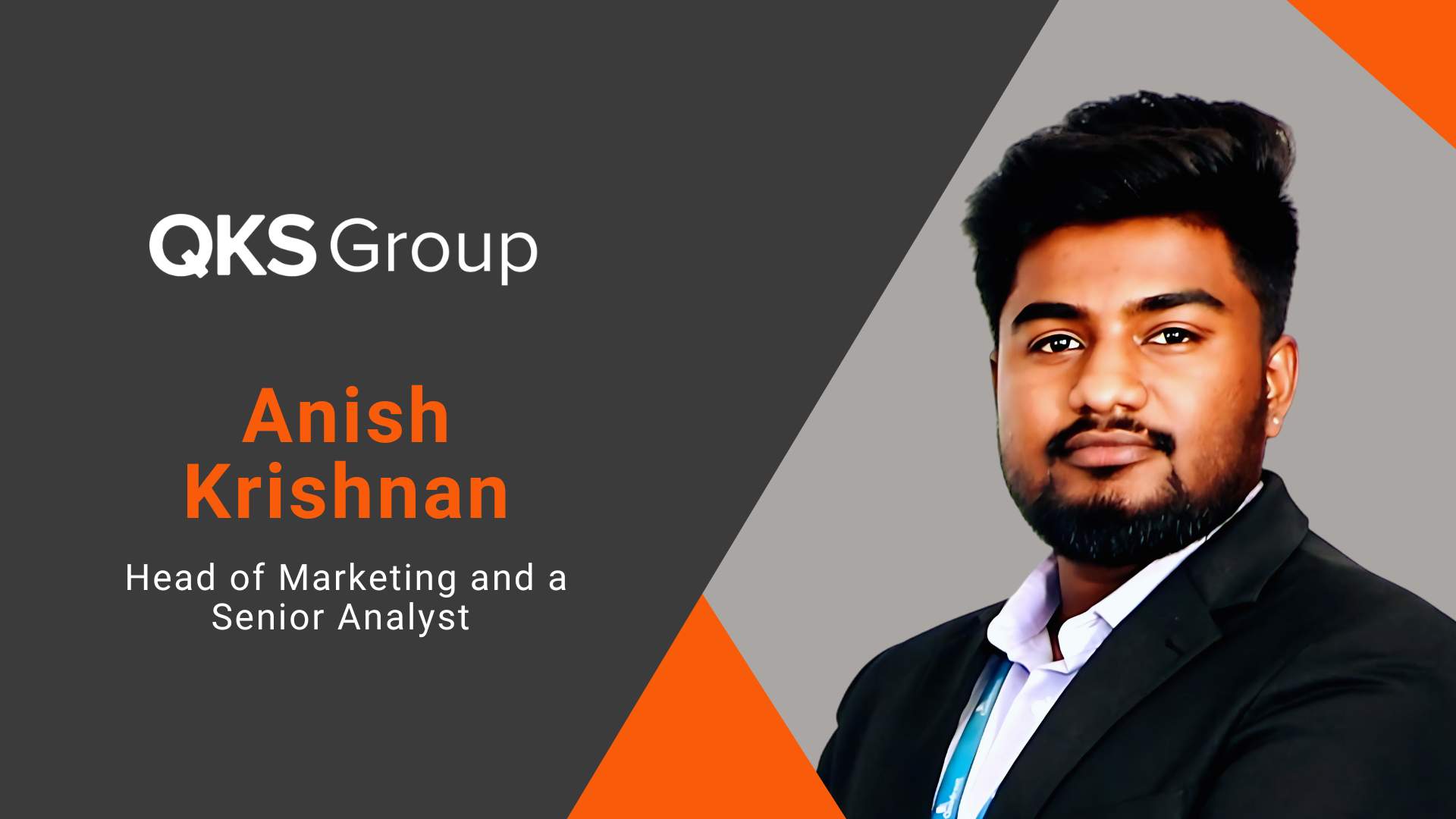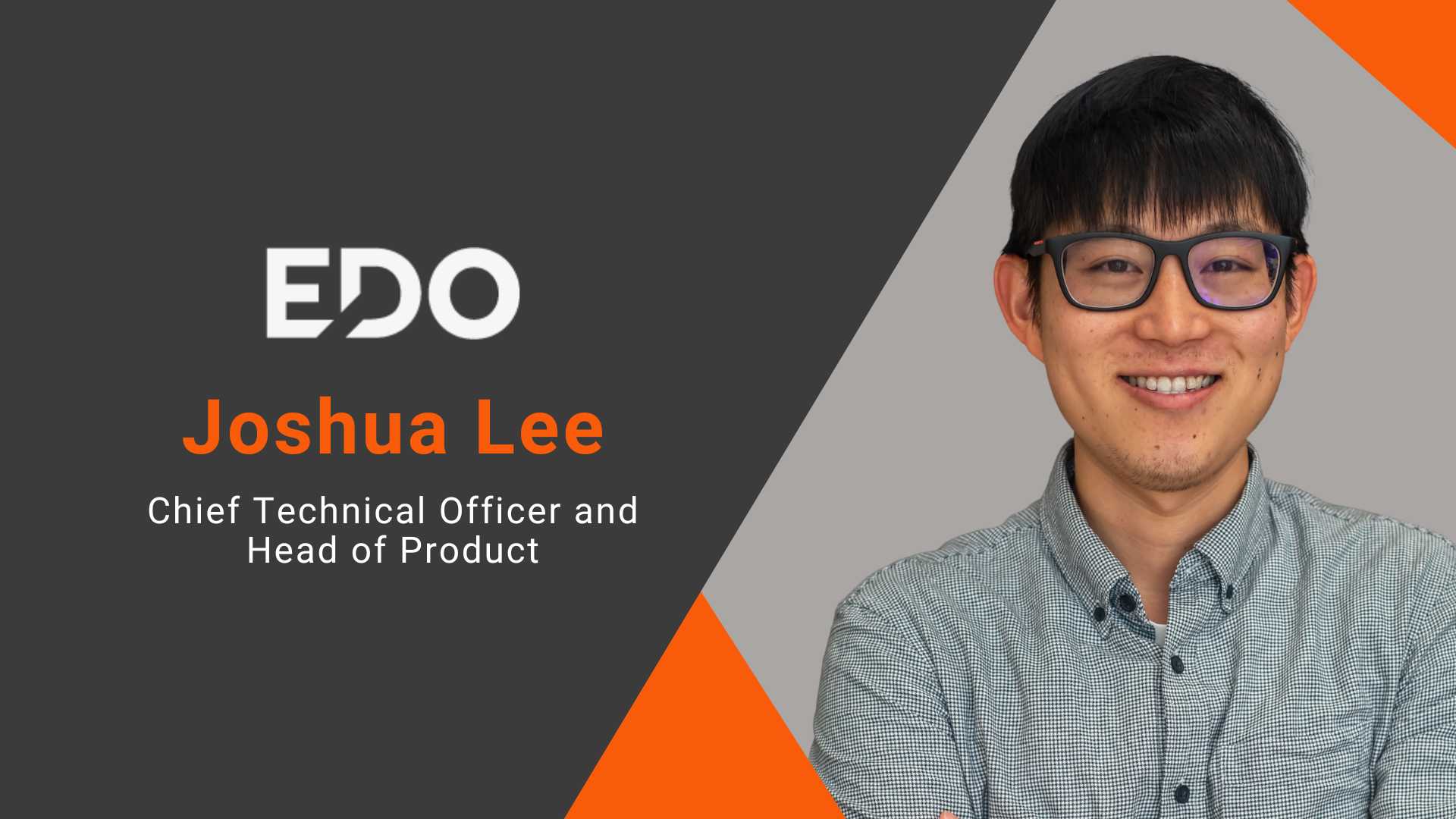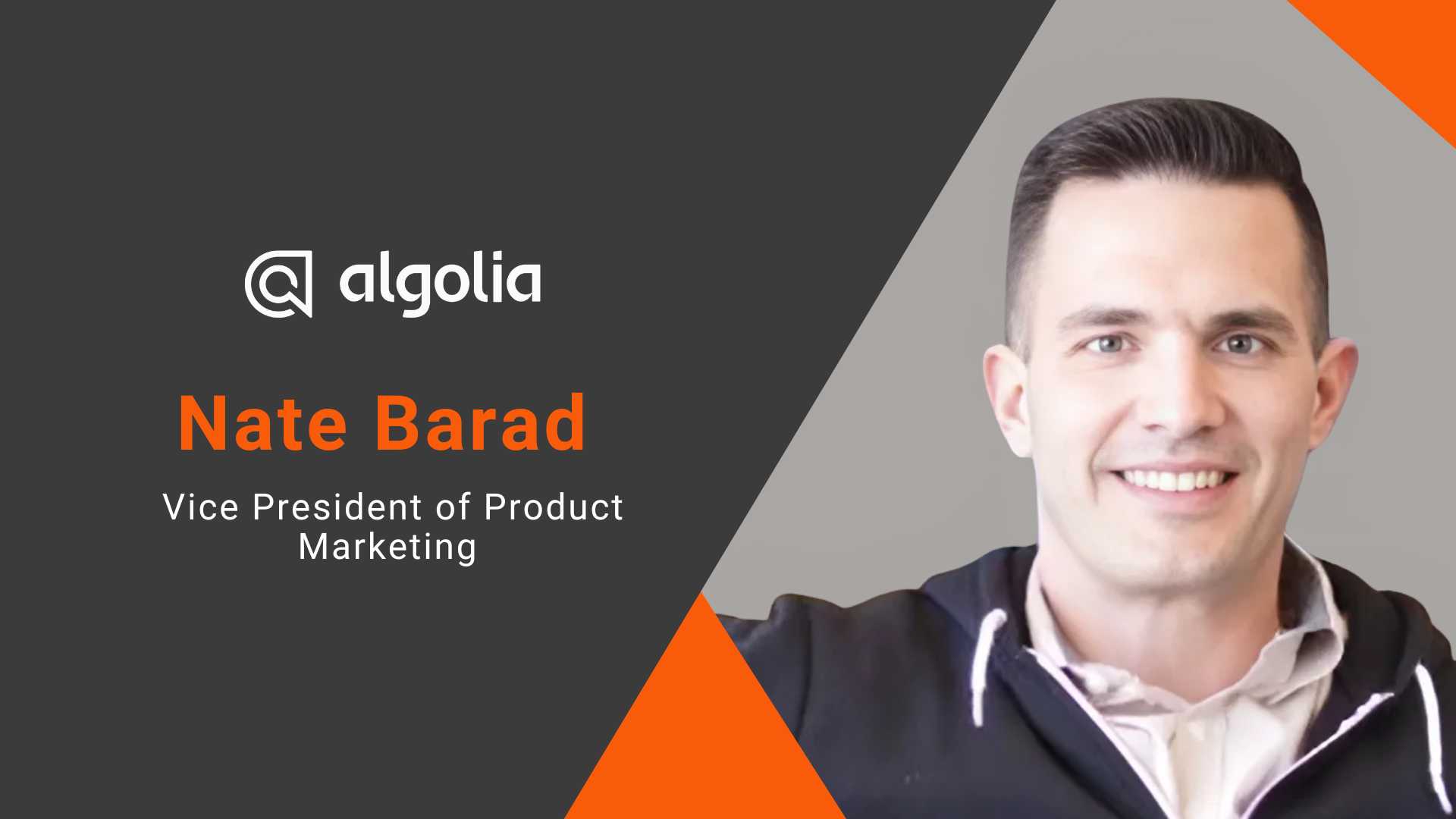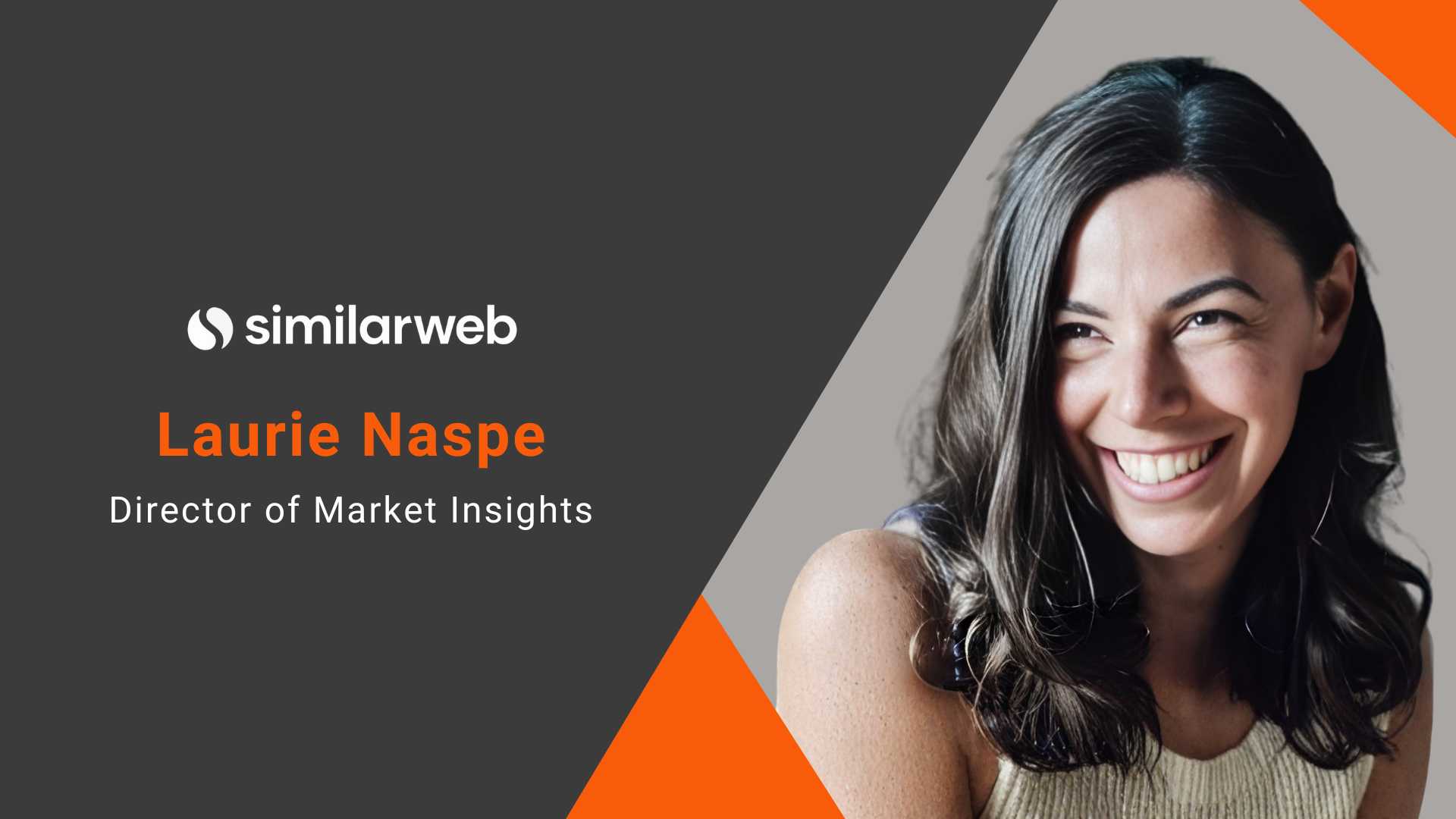
Interview
B2B Social Data Meets Business Impact
social media management 15 Sep 2025
1. What are some common insights marketing teams find using this integration to make more informed business decisions?
Unlocking the power of data has never been more critical, especially as today's B2B marketers are required to deliver clear and measurable business impact from their social media investments. With the Oktopost Power BI integration, B2B marketers can build dashboards that bring together social media performance alongside key business data, such as website traffic, CRM activity, and sales outcomes.
This integration allows teams to visualize how social media influences areas such as lead generation, revenue growth, and customer engagement, all in one place. Teams can track trends, analyze which campaigns are driving results, and generate reports that connect social performance directly to business objectives. It's not just about proving value, but seeing it in real time and optimizing accordingly.
2. How does this integration eliminate the mundane and time-consuming task of consolidating siloed data?
Before this integration, marketing teams often spent hours collecting data from multiple platforms and then tried to reconcile that data into one narrative. The process was slow, expensive, error-prone, and rarely produced a complete picture.
Oktopost’s Power BI integration removes that burden by automatically consolidating siloed data to create reports and enabling the generation of data-blended reports, empowering B2B teams to make informed business decisions.
This makes it possible to provide stakeholders with clear, data-driven insights, without spending time manually pulling numbers. With automation in place, teams can focus on interpreting data, not chasing it.
3. According to PWC research, 93% of CMOs struggle to show marketing's role in growth. How do you help close that gap?
93% of CMOs say that positioning marketing as a 'growth driver' at their company is challenging, as many B2B marketers struggle to connect their social media efforts to broader business outcomes. That’s often because the data needed is either inaccessible, siloed, or not tied to outcomes that leadership cares about.
Oktopost helps close that gap by integrating social media insights into tools like Power BI, where marketing, sales, and executive stakeholders are already looking. With this setup, marketers can clearly show how social media contributes to pipeline creation, accelerates deal velocity, and supports customer retention.
Instead of relying on soft metrics or anecdotal success, they can point to data that connects campaigns to revenue. This gives CMOs the clarity they need to reinforce marketing's role as a strategic growth driver within the business.
4. What kind of impact have you seen from employee advocacy on brand reach and engagement, and how does Power BI help measure that?
When employees share authentic yet on-brand content, it doesn't just increase visibility; it builds trust. It shifts the message from corporate to personal, which resonates more strongly with today's prospects and customers.
Oktopost makes it easy for employees to participate in these programs at scale. The Power BI integration enables marketers to measure the exact impact of advocacy on key business outcomes, including lead generation, pipeline velocity, and customer retention.
This allows organizations to measure how the brand performs and how individual leaders are influencing the market.
5. Many tools are built for B2C marketers - what are the unique measurement needs of B2B marketers that you address?
Most social media platforms were built with consumers in mind. They’re designed to measure volume, impressions, clicks, and likes, but those aren’t metrics that demonstrate value in B2B.
B2B marketers need to measure business impact over time. They work in environments with longer sales cycles, high-stakes decisions, and complex buyer journeys. Compliance, trust, and engagement matter more than reach, which is why we built Oktopost specifically for this reality. It offers advanced analytics that connect social activity to real business outcomes, from pipeline generation to revenue attribution to customer lifecycle metrics. When integrated with Power BI, B2B marketers gain a complete view of how social contributes to both short-term wins and long-term value.
6. What are the biggest misconceptions companies have about social media’s role in B2B growth today?
That social media is just a branding tool - a way to drive awareness, but not something that directly influences the bottom line. Another is the idea that only company pages matter, and that executive or employee profiles are secondary.
The truth is that social media plays a central role in the B2B buyer journey. It's where buyers do their research, evaluate vendors, and build trust long before they ever talk to sales. Yet many companies still rely on outdated tools that isolate social metrics from the rest of their analytics stack. The rise of AI is making social even more strategic. Social platforms provide massive, dynamic datasets that feed large language models (LLMs), influencing how brands are discovered and how content resonates. Organizations that master social are able to shape how their market perceives and selects them.
Oktopost’s Power BI integration challenges that by bringing social data into the same environment as CRM and sales reporting, creates a full-funnel view of how social drives business results. And with Oktopost’s native conversion tracking technology, companies can now measure executive visibility, tracking how leadership content builds engagement and contributes to the sales pipeline.
This reflects a broader shift in how B2B marketers approach their strategies. Social media is no longer a side channel, but a strategic, measurable lever for growth, and a channel that innovative organizations are learning to treat with the same rigor as every other part of their go-to-market strategy.
Thought: If you want social media to be taken seriously in the boardroom, connect it to the tools your business already trusts. Connecting Power BI to Oktopost isn’t just a reporting tool; it bridges marketing efforts and business impact.
Get in touch with our MarTech Experts.
DXC CMO on AI, Brand Growth & Innovation
digital transformation 15 Sep 2025
1.What role does marketing and communications leadership play in supporting your brand’s international visibility and competitive differentiation?
A brand is only as strong as the problems it solves for its clients.
That’s why everything we do at DXC focuses on innovating for our customers—solving the challenges they face today and preparing them for tomorrow.
In this context, marketing has moved beyond traditional branding and advertising to become a key lever for business growth, encompassing a broader range of strategies to engage with customers, build advocacy, manage experiences, and gather valuable insights to create authentic connections.
We shape global perceptions of our brand by strategically engaging audiences across diverse channels, ensuring our message resonates and builds trust.
By creating compelling content, telling impactful stories localized for different global markets, and using data to refine our strategy and make smarter decisions, we’re able to position our brand as an innovative leader and thought leader around the world.
At the same time, AI has completely changed the game and redefined what’s possible.
It has created efficiencies that give our marketing teams the freedom to focus on strategic priorities, rather than work in silos.
The technology has facilitated cross-functional collaboration among marketing, sales, product and strategy departments to improve business outcomes and drive revenue growth.
AI’s democratization — of both data and knowledge — has meant that teams of all sizes, budgets and skills have been able to put AI tools to work across the value chain and to increase creativity and experimentation across marketing departments and companies.
2.How is your organization supporting senior leaders in becoming recognized thought leaders in areas such as AI or digital transformation?
In today’s AI-driven landscape, authentic thought leadership is more important than ever.
We’re working side by side with the business to combine DXC’s strategic priorities with meaningful storytelling that engages audiences and builds trust, credibility and competitive differentiation in the market.
We take a deliberate, multi-channel approach that includes high-impact speaking opportunities at global conferences, industry forums and executive roundtables where our leaders can share insights on emerging technologies and enterprise transformation.
These platforms position DXC at the forefront of innovation.
Our marketing and communications teams also work in close partnership with leaders to develop compelling thought leadership content (from bylined articles and LinkedIn pieces to industry spotlights and strategic customer narratives) that reflect their vision and our broader innovation agenda.
Our focus is on industries where our experts understand the unique business processes and challenges companies face.
We share insights shaped by real client engagements, and we approach thought leadership as a collaborative effort— drawing on perspectives from partners, customers, industry and academia to enrich the conversation and create shared knowledge that moves the world forward.
3.As AI reshapes business landscapes, how are you translating technical capabilities into business impact narratives for customers and stakeholders?
We frame every conversation about AI around what matters most to our customers - their goals, pain points and opportunities - rather than solely on the technology itself.
AI becomes real when it’s grounded in purpose and focused on outcomes that truly move a business forward.
That’s why we bring it to life through real-world examples that matter to our customers.
Whether it’s reducing the processing time of insurance claims, automating hundreds of banking processes, predicting equipment failures before they happen, or providing insights that improve inventory forecasting, we demonstrate how AI delivers measurable outcomes that make a difference.
Many of our customers are benefiting by starting small with AI and then scaling up as they see results over time.
This theme is powerful because it meets customers where they are— acknowledging both the opportunities and uncertainties of AI adoption.
For example, Singapore General Hospital empowered doctors to make critical decisions on antibiotic use in 90% of the time; Equitable Holdings cut customer service response times by 80% with a GenAI chatbot built and deployed in just 30 days; and the Italian Ministry of Cultural Heritage used AI agents to sift through decades of bibliographic data, linking millions of digital materials from more than 6,500 libraries.
These examples illustrate our commitment to real, measurable impact—showing how AI drives meaningful progress across diverse fields.
We focus our narratives on stories of progress—not perfection—highlighting practical wins, lessons learned and the human impact behind the technology.
Our approach embeds AI seamlessly into our customers’ operations, making it a core part of their business strategy and go-to-market, not just an add-on.
4.What KPIs or performance indicators do you use to measure the impact of global marketing and communications efforts on brand equity and market perception?
Our focus is on client centricity, a practice grounded in data, driven by listening and placing the customer experience at the center of every business strategy and execution decision we make.
Our strategy starts with first-party signals: real-time feedback, advocacy indicators and the insights our customers share with us every day.
This intelligence is more than informative; it’s the golden thread that shapes how we design experiences, evolve our go-to-market approach, and continuously raise the bar on relevance and responsiveness.
By connecting insights across the full customer journey, we’re able to reinforce trust, deepen loyalty, and ensure our brand remains relevant in a world of constant change.
We’re also using analytics and real-time feedback to fine-tune what we say, how we say it, and where we show up.
Whether through digital channels, events, or executive engagement, we’re focused on being timely, credible and value-driven in every interaction.
And through our DXC Client Insight Exchange, a new white-glove program that we launched in February, we actively listen to our customers, gather direct feedback, and prioritize their unique needs at every turn.
We also collaborate closely with the CIO’s office to uncover more agile ways of aligning efforts—not only in demand generation, but throughout the entire funnel, all the way to conversion to drive business growth.
This is where tight collaboration between sales, the CIO’s office and other teams becomes crucial.
Our focus is always on the customer and the unique value we provide.
5.How do you ensure alignment between corporate messaging, innovation roadmaps, and public narratives communicated by executives and PR and marketing teams?
We ensure alignment by fostering close collaboration across teams, creating regular opportunities for knowledge sharing and maintaining a deep understanding of our business and our customers.
We do this by bringing together stakeholders from industry, offerings, marketing, communications and executive leadership to co-develop a unified narrative that reflects both where the business is today and its future direction, while staying grounded in feedback from customers, employees, partners and other key stakeholders.
This shared foundation helps us consistently articulate our value—from internal teams to the boardroom to the marketplace—with a clear focus on customer impact, innovation leadership and strategic differentiation.
DXC helps keep some of the biggest companies in the world innovating and growing, thanks to its strong global footprint and local expertise.
And I’ve witnessed the amazing drive and tenacity that keeps our consultants, experts and engineers focused on our clients’ desired outcomes.
To that end, we ground our storytelling—whether from executives, in press coverage, or through marketing and communications content—in real progress and outcomes.
We elevate real-world examples and measurable outcomes to show how our technology delivers value today, while signaling where it’s going next.
This is how we build trust, reinforce our position as an innovation partner, and ensure that we’re speaking with one voice, across every channel.
6.How is your marketing and communications strategy adapting to disruption in global technology markets, particularly around AI and enterprise transformation?
It feels like every day there’s a new AI breakthrough or use case that captures our imagination and sparks our creativity.
But this next wave of AI won’t come from quick fixes or isolated projects.
Instead, it will be driven by leaders and teams who are building on early successes and embedding AI deeply across their entire organization.
At DXC, we believe AI must be pervasive, not just used by leadership.
That’s why we’re building a culture where everyone is encouraged to use AI to do more meaningful, high-impact work.
For example, AI is rewriting the marketing playbook, with agentic AI automating workflows and freeing marketers to focus on strategy, customer connections and personalized experiences.
Building on this shift, my teams are embracing a hands-on approach to AI — experimenting with new tools and techniques that not only optimize click-throughs, but also to inspire better thinking, deeper human insight, and create more resonant storytelling.
And we’ve cut content creation and video production time by 30%.
This has enabled us to uncover faster, more effective ways to engage our audiences, transforming the function and sharpening our team’s strategic and creative edge.
A ‘learning by doing’ mindset sharpens our strategies in real time, helping us adapt quickly to market changes and deliver more personalized, impactful experiences.
But AI alone can’t drive growth — a human touch is essential to unlock its potential.
In lead generation, for example, AI now qualifies prospects so sellers can focus on relationships and marketers on strategic creativity—proving this isn’t about replacement, but about being better, bolder and faster.
The result: a new breed of super learners who embrace every opportunity to cultivate new skills, are nimble in the face of change, and are empowered to pivot into new areas of opportunity and push the limits of what AI makes possible.
Get in touch with our MarTech Experts.
AI Media Intelligence for Reputation & Trust
intelligent assistants 15 Sep 2025
1. How can AI and automation be effectively deployed to track sentiment, misinformation, or reputational risks across diverse media channels?
AI and automation have become essential tools in navigating today’s complex and fast-moving media landscape. With billions of data points generated daily across print, broadcast, digital platforms, and social media, AI excels at sifting through this vast sea of information at scale and at speeds no human team could match.
Modern AI systems, including large language models and multimodal analysis engines, go beyond simple keyword scanning or sentiment scoring. They can detect nuanced tone, sarcasm, polarizing narratives, or shifts in public opinion — even across languages and regions. These capabilities are particularly powerful in identifying misinformation patterns, coordinated disinformation efforts, or emerging reputational risks before they escalate.
However, the real effectiveness lies in the synergy between artificial and human intelligence. While AI identifies trends and signals early, human analysts are essential for interpreting these signals through a strategic lens – understanding the “why” behind the data, not just the “what.” This human-in-the-loop approach ensures that insights are not only accurate but also actionable, helping organizations protect and strengthen their reputation in real time.
2. What key challenges do organizations face in managing real-time media monitoring at scale, especially in the era of digital and social media?
The core challenges can be summed up as volume, velocity, and veracity. The sheer scale of content produced across digital and social platforms every second is staggering – far beyond what manual teams can process. At the same time, the velocity of online conversations means that a local issue can escalate into a global reputational crisis in minutes.
Compounding this is the challenge of veracity: not everything that gains traction is accurate or trustworthy. Cutting through the noise to identify what truly matters requires more than just data collection – it demands intelligent filtering, source verification, and contextual prioritization. AI is a critical enabler here: not only does it automate collection and classification, but it also unlocks new capabilities — like real-time narrative mapping, risk scoring, and predictive modeling. It helps teams shift from reactive monitoring to proactive intelligence.
Human oversight is critical to interpret nuance, assess reputational impact, and provide strategic direction. It’s this human–led, data-fed collaboration that transforms raw media signals into meaningful, real-time intelligence.
3. How can organizations ensure consistency and relevance in media insights when operating in both global and local contexts?
Striking the right balance between global consistency and local relevance calls for a well-designed hybrid approach. Standardized KPIs and harmonized methodologies provide a shared framework for generating insights at scale, creating alignment across teams and geographies. At the same time, local analysts contribute the cultural fluency, language nuance, and market-specific context needed to make those insights truly meaningful and resonant on the ground.
The most effective organizations bridge global and local perspectives through integrated platforms, real-time collaboration, and continuous feedback loops. One international public-sector client, for example, operates on this model – combining a centralized insight framework with localized media analysis across more than two dozen countries and in over 30 languages. This enables them to understand how overarching messages are perceived at the local level and to adapt their communication strategies accordingly. The result: media insights that are not only consistent and credible, but also relevant, timely, and actionable across diverse and dynamic markets.
4. How are institutions particularly in the public or governmental sectors adapting their communication strategies in response to media intelligence data?
Public institutions are increasingly using real-time media intelligence to shift from reactive to proactive communication models. By closely monitoring public discourse, they can adapt messaging quickly, address misinformation early, and engage more strategically with different stakeholder groups.
A strong example is a major international public institution that leverages media intelligence to understand sentiment across countries, anticipate politically sensitive topics, and coordinate communication efforts across languages and cultural contexts. Rather than waiting for narratives to unfold, this organization uses insights to proactively shape and tailor its messaging – ensuring it resonates locally while supporting broader strategic priorities.
This data-informed approach enables public institutions not just to respond more effectively, but to lead the conversation, strengthen transparency, and build public trust in an increasingly complex and fast-moving media environment.
5. What governance frameworks should be in place to oversee responsible use of media listening technologies?
Responsible use of media intelligence demands more than powerful tools – it requires robust governance. Organizations must establish clear, enforceable policies around data collection, usage, storage, and access. These should be grounded in privacy laws, ethical guidelines, and a firm commitment to transparency.
Governance should also be cross-functional. Involving legal, compliance, IT, and communications teams ensures that media listening practices are aligned with both regulatory standards and corporate values. Regular audits, training, and scenario planning are essential components. Ultimately, governance is about safeguarding both the organization’s integrity and the rights of the individuals whose voices are being monitored.
6. How can organizations future-proof their media and reputation strategies amid rapidly changing news cycles and digital ecosystems?
In a media environment where narratives can shift overnight, future-proofing means building for change, not permanence. Organizations must invest in adaptable technology stacks that allow for real-time monitoring, predictive analytics, and seamless integration of new platforms and data sources.
Equally important is cultivating organizational agility – training teams to interpret signals quickly, act decisively, and learn continuously. Strategic partnerships with media intelligence experts, combined with scenario planning and crisis simulations, can help stress-test reputational strategies before real-world events hit.
At its core, future-proofing isn’t just about tools – it’s about mindset. The organizations that thrive will be those that embed resilience, foresight, and curiosity into the very fabric of how they communicate.
Get in touch with our MarTech Experts.
Authentic Video Storytelling for Brand Trust
marketing 12 Sep 2025
- How do you see organizations leveraging video formats (e.g., behind-the-scenes) to build trust with Gen Z and Millennial audiences?
Video has evolved beyond a digital marketing tool to become a powerful force for human connection, especially among Gen Z and Millennial audiences. Social video is less about persuasion, as one might see with traditional advertising, and is more about entertaining and informing users: as iStock’s global research platform, VisualGPS, found, about half of Millennials (45%) and Gen Z (50%) say they use video‑first platforms for entertainment. Additionally, the VisualGPS research shows that 31% of people globally seek out videos on social media for inspiration and to learn something new. With these insights in mind, brands and SMBs should focus on video content that adds value to people’s lives to build interest in their brand by teaching viewers something new or sharing a personal story.
A staggering 98% of people say they value authenticity in the visuals they consume, which is one reason that behind-the-scenes content is becoming such a popular (and powerful) format. At a time when audiences are deeply skeptical of content they encounter online, video content that humanizes a business and comes from a place of authenticity is more likely to foster trust. To do so, businesses are adopting popular social video formats that mirror the content users are already looking for.
For example, a local bakery might work with one of their employees to create a “day in my life” video – a common lifestyle video format – to showcase the bakery from a behind-the-scenes perspective while giving audiences a personality to connect with. Meanwhile, a beauty brand might debut a new line of products with a “get ready with me” (GRWM) video–a format that is as much a vehicle for powerful personal storytelling as it is for showing the look and feel of a product. Our research shows that video-led personal journeys inspire empathy and engagement, and these first-person, narrative-focused formats are deeply compelling while fairly simple to produce
All this to say, many small businesses don’t have the time or resources to produce 100% of their own content. They may also want to include visuals they can’t capture locally, or represent more diverse identities in their videos. To solve this, small businesses are utilizing stock footage to augment their video content. The right pre-shot imagery and footage can evoke a certain mood, heighten the impact of their message, and allow more audience groups to see themselves reflected in a brand’s content.
Overall, a combination of stock footage, smartphone video, and user-generated content will help brands and businesses to strike that coveted balance between authenticity and polish.
- Which platforms are brands prioritizing in their video distribution strategy (e.g. Instagram, YouTube), and how do they adapt content formats to meet each platform's expectations?
Brands are going where their audiences are going. Which social platforms they target will vary depending on which audiences that brands want to engage, where their brand social accounts already have a strong presence, and where they hope to grow. From there, brands are creating video content in line with the expectations of users on a certain platform. For example, TikTok content might play to a trending format or make use of a viral audio file to increase discoverability, while YouTube videos could be tailored for more intentional, appointment-style viewing.
A major trend of note is long-form content, which is gaining widespread popularity across platforms. It’s a shift that defies the reality of our shrinking attention spans and speaks to consumers’ appetite for valuable, authentic content. This is not to say that every brand should be churning out hours of video entertainment. Rather, the growth of long-form video gives brands more time and freedom to tell their stories.
- How effectively does video content reflect a brand’s personality—whether fun, premium, or purpose-driven?
If every piece of content is an opportunity to create a personal connection with a potential customer, then it’s best to portray your brand honestly and authentically. In engaging today’s consumers, personality and credibility go hand-in-hand. Video content that effectively showcases a brand’s personality is content that focuses on who the brand is, not just what it sells or how it operates.
Brands should also account for industry-specific nuances when creating content that expresses their personality. For example, health and wellness brands might consider showing how their products and services improve the lives of everyday people, rather than leveraging paid influencers, as 81% of people prefer to see real individuals actively improving their well‑being over aspirational imagery. Even sleeker, more “premium” brands can humanize their content by showing the passion and care that goes into the work. It’s all about leaning into personality in a way that compels audiences, but also feels truthful.
- Are SMBs using video to demonstrate products (e.g., unboxings, tutorials, testimonials) in ways that reduce buyer friction and increase conversions?
According to VisualGPS, 72% of consumers prefer video for product demonstrations, making them a crucial way for SMBs to help audiences understand their product and make informed purchasing decisions. Video allows for a 360-degree view that static online shopping doesn’t offer, as well as the injection of customer testimony or expert commentary from the seller. The more questions a business can answer about how their products look, feel, and function, the more likely they are to convert.
Fortunately for small businesses, these kinds of videos are not excessively expensive to produce, and audiences will value the authentic, realistic look at the product. These videos also offer another chance for SMBs to show off their personality, building further trust and amplifying the chance of conversion.
- How do you quantify the impact of video storytelling on long-term customer loyalty and brand trust?
Our ongoing VisualGPS research looks at consumer sentiment over time, and our latest video insights reveal that approachable content told through diverse, creative formats are what resonate most with consumers, building loyalty and trust.
As for quantifying the impact of an individual campaign, each brand has its own specific metrics that matter most, but video content has been expressly linked to higher conversion rates, social engagement rates and improved SEO. SMBs and brands can also use UTMs to see if videos are driving web traffic and monitor for an uptick in product reviews, location check-ins, and social mentions.
And it’s not just quantity that matters: when posting visuals on social media, comments and direct messages from audiences can be valuable sources of qualitative feedback to help SMBs determine whether their video campaigns are resonating.
- How are you preparing your teams to scale video storytelling as part of a broader digital engagement strategy in a “video-first” environment?
Video content has been a core part of our offering at iStock, and we work with our content creators to produce compelling clips and footage that can be used for just about any project, whether it's for social media, paid ads, websites or digital banners. Creating and scaling original content, especially high-quality video content, can be cost-prohibitive for SMBs; stock footage enables businesses to create varied, personalized and more creative videos to engage a wider variety of audiences. With the variety of dynamic video options available to today’s businesses, it’s easy for them to find something that feels like a true fit for their brand and the story they’re trying to tell.
Scrolling and watching videos online is how so many people fill the downtime in their days, so brands and businesses want to enter these spaces without being invasive and overly advertorial. Video content that models what users are already seeking, while coming from a place of honesty and authenticity, is the ideal way in.
The secret to scaling storytelling is to mobilize your teams as storytellers. It’s important to look at the metrics and understand which content attracts which audiences, but the human element is what truly unlocks scalability without requiring a massive budget. Audiences have a keen sensibility for what’s real and what isn’t, and the best way to keep them engaged is through storytelling that feels honest.
Get in touch with our MarTech Experts.
How Cleeng’s SRM® Model Redefines Subscriber Retention
marketing 12 Sep 2025
When it comes to combating subscriber churn, nurturing long-term relationships is the key. Today, we sat down with Gilles Domartini, CEO and Founder of Cleeng, a subscriber retention management (SRM®) company to discuss strategies that can strengthen the subscriber engagement lifecycle and activate personalized, real-time approaches that can convert passive users into loyal subscribers.
1. You’ve described Cleeng as a “Subscriber Retention Management” company. How does that differ from traditional subscription platforms?
A Subscriber Retention Management (SRM®) system takes a more strategic approach to keeping subscribers engaged, reducing churn, and maximizing lifetime value. Our SRM® suite helps traditional subscription services optimize retention by leveraging data-driven insights, ensuring payment reliability, and providing robust customer support.
For example, our customers include traditional subscription platforms such as Univision, Volleyball World and Newsmax. By leveraging Cleeng, Newsmax gained over 150,000 paying subscribers within the first month and retained over 85% of those subscribers as part of the launch of Newsmax+, their OTT service that provides access to Newsmax for those without traditional cable subscriptions.
2. Can you share an example of how a small change in personalization led to a big impact on engagement or retention?
One example that comes to mind is our most recent work with Skyship Entertainment and how a simple change of streamlining their billing process to meet the demand for multi-channel offerings, led to impactful subscriber growth.
Skyship Entertainment is the company behind Super Simple Songs, one of the world’s most trusted educational brands for preschoolers, with 47 million Youtube subscribers. With an audience spanning millions of families worldwide, they wanted to scale their reach even further and offer a more premium, ad-free experience that children could use independently, with content parents could trust.
Specifically, parents wanted the ease and freedom to subscribe once and access the service across multiple devices, whether on iOS, Android, or Amazon tablets. By leveraging our multichannel billing solution, they were able to create a unified multi-channel experience, without making the experience complex for subscribers.
Over the past year alone, the platform’s subscriber base has grown by more than 140%, driven organically, by improving the onboarding flow, having seamless cross-device access, and increasing awareness through YouTube.
3. What’s one underrated metric companies should track more closely when it comes to churn prevention?
One underrated metric that companies should pay closer attention to is Time-to-Convert: the duration between when a user signs up and when they actually start a paid subscription.
While it happens at the very beginning of the customer journey, it can be a strong indicator of future churn risk. A long time-to-convert often signals friction in the onboarding process, a lack of perceived value early on, or hesitancy to commit. These are factors that can lead to weaker engagement and, ultimately, higher churn. Tracking this metric can help teams identify and address conversion bottlenecks before they turn into retention problems.
Yet, there are many more KPIs to succeed, like winback rate, cancellation rate, upgrade/downgrade, LTV. That’s the benefit of having a platform like Cleeng that helps you easily monitor those.
4. What are some UX mistakes you see platforms make that unintentionally drive users to churn?
One of the most common UX mistakes I see is not being transparent enough about trial periods and billing. When users aren’t sure when they’ll be charged or how to cancel, it creates mistrust and often leads to churn right after a free trial ends. A 65%+ conversion from free to paid is typically a good benchmark.
Another issue is making it difficult for subscribers to access their content across devices. If logging in or switching between devices isn’t seamless, users get frustrated and may give up on the service altogether. Nowadays, the web only accounts for 40% of connections (may vary substantially), and the vast majority of people connect on multiple devices.
But perhaps the most overlooked mistake is failing to support users when a payment fails. It represents between 30% to 50% of all churn. Many people churn involuntarily because their payment didn’t go through, not because they wanted to leave. If the platform doesn’t make it easy to resolve payment issues, you lose customers who actually intended to stay. Focusing on transparency, smooth access, and proactive payment support can make a real difference in keeping subscribers engaged.
5. How do you identify the “right moment” to deliver a specific message to a subscriber?
With D2C subscription models, brands are able to collect a significant amount of data from its subscribers, however the challenge that many of them face is efficiently extracting insights from the data and leveraging them to make impactful decisions. These data-driven decisions are crucial to identify that “right moment” to deliver messages to subscribers in order to stay competitive, maximize customer lifetime value.
Advanced AI tools can be beneficial to help streamline this process. With our ChurnIQ AI-ssistant, we help brands get precise answers from their data without the need for deep analytic expertise, which can be both costly and time consuming. Brands can leverage AI-ssistant by asking simple prompts, which will then quickly generate data visualizations, and uncover hidden trends and patterns from their subscriber dataset. These insights can then be used to send those specific messages, uplevel retention strategies, adapt to evolving customer needs and enhance user experiences.
6. If you could give one piece of advice to D2C leaders trying to improve retention, what would it be?
If I could offer one piece of advice to D2C leaders focused on improving retention, it would be to treat retention as a core discipline, not just a byproduct of great content. Retention success requires more than reactive strategies; it depends on having the right infrastructure to support seamless subscriber experiences across billing, offers, payments, customer care, and data analytics.
Too often, platforms rely on fragmented tools or internal builds that are hard to scale or adapt to changing needs. Instead, it's worth investing in solutions that are purpose-built for subscriber businesses. These should offer automation, actionable insights, and the flexibility to support multiple models such as subscriptions, pay-per-view, or seasonal passes.
What sets the most resilient platforms apart is their ability to respond quickly to churn signals, optimize the right levers, and experiment without being held back by complex systems or limited resources. In a competitive and fast-moving landscape, adaptability and operational precision are essential for long-term retention and growth.
Get in touch with our MarTech Experts.
The Future of MarTech: AI, CX, and Personalization
customer experience management 11 Sep 2025
- Predictive AI can anticipate when a customer is most likely to churn and trigger retention campaigns before it happens.
- Generative AI can personalize email content, product recommendations, or even ad creative for each user at scale something manual teams could never achieve.
- Journey orchestration platforms infused with AI can adapt the next best action for a customer as their context changes, rather than locking them into a rigid funnel.
- Customer Data Platforms (CDPs) powered by AI can reconcile identities across multiple touchpoints, resolving fragmented profiles into a single source of truth.
- AI can also cleanse, enrich, and normalize messy legacy data turning previously unusable information into actionable insights.
- Data scientists and marketing technologists will become core to every team, bridging creative storytelling with analytical rigor.
- Copywriters will evolve into AI content strategists, leveraging generative tools to ideate and scale.
- Campaign managers will transition into journey architects, focusing on customer experience orchestration rather than one-off campaigns.
- Trust & Transparency: Customers want to know when they’re interacting with AI, and they expect responsible data usage. Clear disclosure and ethical guardrails are essential.
- Bias in Models: If AI is trained on biased data, it will deliver biased outcomes. Companies must actively monitor, audit, and retrain models to ensure fairness.
- Change Management: Marketers often resist AI adoption because it challenges familiar workflows. The answer is gradual integration, strong governance, and upskilling programs.
Think of AI as the co-pilot: it can analyze billions of signals, suggest the best path forward, and even create variations at scale but the vision, the brand voice, and the emotional connection must remain human-led.
EDO’s Joshua Lee on Data-Driven TV Outcomes
advertising 11 Sep 2025
Advertisers face rising pressure to prove the value of their TV investments, especially in a fragmented market and amid ongoing economic uncertainty. Traditional planning often forces a trade-off between broad reach and measurable outcomes — a compromise many marketers can't afford to make.
EDO, the TV outcomes company, uses predictive engagement data that correlates to future sales to help advertisers bridge that gap. With tools like Engaged Audience Planning, EDO enables brands to test investment scenarios within their existing workflows and identify strategies that deliver both scale and performance. Joshua Lee, EDO's Chief Technical Officer and Head of Product, shares how the company's approach is helping advertisers plan with greater confidence.
1. What does the setup and onboarding process look like for advertisers using Engaged Audience Planning for the first time?
Media planning today is complicated enough, so we’ve made onboarding to Engaged Audience Planning as easy as possible. This process doesn’t require a new workflow or integration; we align with advertisers’ existing planning tools, like those from Nielsen, Kantar Media, or VideoAmp. Clients can see which scenarios offer the best combination of reach, engagement, and cost efficiency — all before a dollar is spent.
Advertisers simply share their existing media plans — including scenarios and metrics like GRPs or CPMs — with EDO. From there, our team maps the plans to EDO’s cross-platform TV outcomes data, calculating engagement rates and outcome efficiency for each scenario. This provides a clear, side-by-side comparison that illustrates how different investment scenarios can result in various combinations of audience impressions and outcomes.
2. EDO has measured over 110 trillion cross-platform impressions — how does this dataset power the predictive models behind the solution?
EDO’s dataset spans every major linear network and a growing number of streamers, enabling us to model how different audiences respond to ads. Our predictive models analyze ad-driven behaviors, such as brand search, website visitation, and LLM chat engagements, which are proven indicators of consumer intent. Using vertical AI to analyze engagement across trillions of impressions and hundreds of industries, we surface meaningful patterns that predict future performance by program, daypart, genre, and more. This enables us to forecast engagement outcomes at scale and optimize our approach toward them before campaigns even begin.
3. Can advertisers using other platforms (e.g. Adobe, etc.) also integrate EDO’s data for unified planning?
Whether it’s Engaged Audience Planning or any other product in our suite, EDO data is designed to be interoperable. Whether a brand is using Nielsen, VideoAmp, Kantar, or agency planning tools from Dentsu, GroupM, or IPG, EDO’s outcome data can be layered onto existing plans with no disruption. We’ve structured Engaged Audience Planning to work flexibly within the tools clients already rely on, often using exported files to match and model engagement outcomes. There’s no need for a formal integration or technical relationship to get started.
4. In what ways does Engaged Audience Planning support both brand awareness and performance marketing objectives simultaneously?
Traditional audience planning often forces a trade-off between brand reach and performance. With EDO’s data, advertisers no longer have to choose. Our solution helps brands identify plans that deliver both strong audience reach and measurable outcomes. That means marketers can optimize their investments for mid- and upper-funnel KPIs in tandem — a growing priority in convergent TV, where brand and demand goals increasingly overlap.
5. How do you see this tool fitting into or enhancing existing audience segmentation strategies used by brands?
Audience segmentation is essential, but advertisers don’t see the full picture unless they also know how viewers in each audience segment engage with the ads they see. By pairing outcome data with audience targets, EDO adds a crucial layer of intent to segmentation strategies, enabling advertisers to define their audiences and test which environments actually drive those segments to take action. This enables more effective media planning, where audiences are prioritized on both relevance and predicted performance.
6. What message would you give to brands still hesitant to fully embrace data-driven, outcome-optimized planning in a convergent TV world?
The media landscape is only getting more fragmented, and guesswork simply won’t cut it. Brands that embrace outcome-based planning gain a competitive edge — not just in efficiency, but in clarity. EDO helps advertisers make more confident decisions by connecting plans to real consumer behavior. If you’re still relying on audience reach alone, you may be missing the plans that deliver better results for the same or lower cost.
Get in touch with our MarTech Experts.
AI-Powered Search & Personalization: Insights from Algolia
ecommerce and mobile ecommerce 11 Sep 2025
1. In what ways does combining manual curation with algorithmic ranking influence your approach to customer experience and conversion optimization?
Combining manual curation with algorithmic ranking allows us to strike a balance between creativity and scale. Manual curation allows retailers to highlight seasonal trends, sponsors, editorially chosen features, and other considerations that may not be picked up from an automated algorithm. This is a great addition to the algorithmic ranking that supports the massive scale of infinite searches and the various ways customers express their needs, whether it's finding a specific product or getting help for a unique scenario. This hybrid approach enhances the customer experience by allowing retailers to solve their customers’ needs more accurately and quickly while also reducing the operational overhead of fully manual configurations. We can leverage AI to help us interpret both user intent and business goals, leading to more efficient and effective conversion optimization.
2. How are you addressing the challenge of managing large or frequently changing catalogs, and what operational improvements could you unlock for your business?
Large, complex catalogs are where accurate and efficient search and discovery becomes really important. The first step in managing large catalogs is making sure they are fully complete and content rich. Every product must have images, descriptions, and translations, or they simply won’t be found or purchased. Next, Algolia focuses on how we can make the catalog better. For example, we can curate and personalize it for specific audiences. This includes layering in rich content such as guides, how-tos and comparisons. Since generating this content is time-consuming and costly, we have given retailers the ability to automatically generate descriptive content using GenAI. And then lastly, make sure everything is operational. We use AI to create and rank content products, create category pages rich in content, and apply image recognition to match products beyond simple metadata. These improvements significantly boost operational efficiency while still elevating the customer experience.
3. How does the ability to personalize search results and category layouts align with your broader personalization strategy across digital touchpoints?
Personalization is most effective when every touchpoint feels relevant and intuitive to the individual, and takes into account who the customer is, their current needs, and informed by recent behavior. By tailoring search results based on behavioral signals, retailers can reduce friction and add true value to a consumer’s shopping experience. Beyond search, personalizing category layouts continues to show a deep understanding of individual preferences. For example, recognizing that one shopper’s “summer look” inspiration will likely be influencing a “back-to-school” wishlist. Beyond making a sale, this personalization builds trust and loyalty in a brand.
4. How are you currently exploring retail media as a revenue stream, and how are you enabling brand placement, sponsored content, or inventory-based monetization?
We work closely with many customers who are investing in retail media and promote their own brands through sponsored content and strategic placements. Customers also have additional revenue streams by hosting channels. Our approach blends manual input with AI optimization. Creatively, we support the manual curation to ensure that particular sponsors or content types are featured in appropriate locations based on brand relevance. At the same time, we leverage AI within our search systems to rank and feature the most optimal products and content driven by real-time customer behavior.
5. Which departments beyond merchandising—such as content, marketing, or media—could benefit most from a no-code, AI-driven content positioning tool, and how will it shape interdepartmental collaboration?
Beyond merchandising, marketing teams would benefit significantly from the combination of creative freedom and intelligent automation, allowing them to tailor campaigns and promotions while introducing them at scale. UX and customer service teams also benefit and could learn more about the content people consume.
6. How important is it to have a unified tool that supports consistent yet localized product and content presentation?
It is incredibly important. Customers are far more likely to engage with—and ultimately purchase—products and content that feel tailored to their needs, location, and preferences. By leveraging a single platform, retailers can maintain brand integrity and quality while also delivering localized, relevant experiences.
Page 3 of 37
Most Recent
The 2025 Reality of the Solo Marketing Coordinator
Interview Of : Debra Andrews
How AI Is Transforming Martech – Jigar Agrawal from eSparkBiz
Interview Of : Jigar Agarwal
Transforming Marketing into a Growth Engine
Interview Of : Alexandra B. Mazzi
AI Search Optimization Can't Wait: Why Marketers Must Adapt Now
Interview Of : Laurie Naspe
The Rise of Agentic AI: How MetadataONE Is Transforming the Entire GTM Workflow
Interview Of : Lisa Sharapata
How Freestar and Audigent are Powering Future-Proof Publisher Demand
Interview Of : Heather Carver
